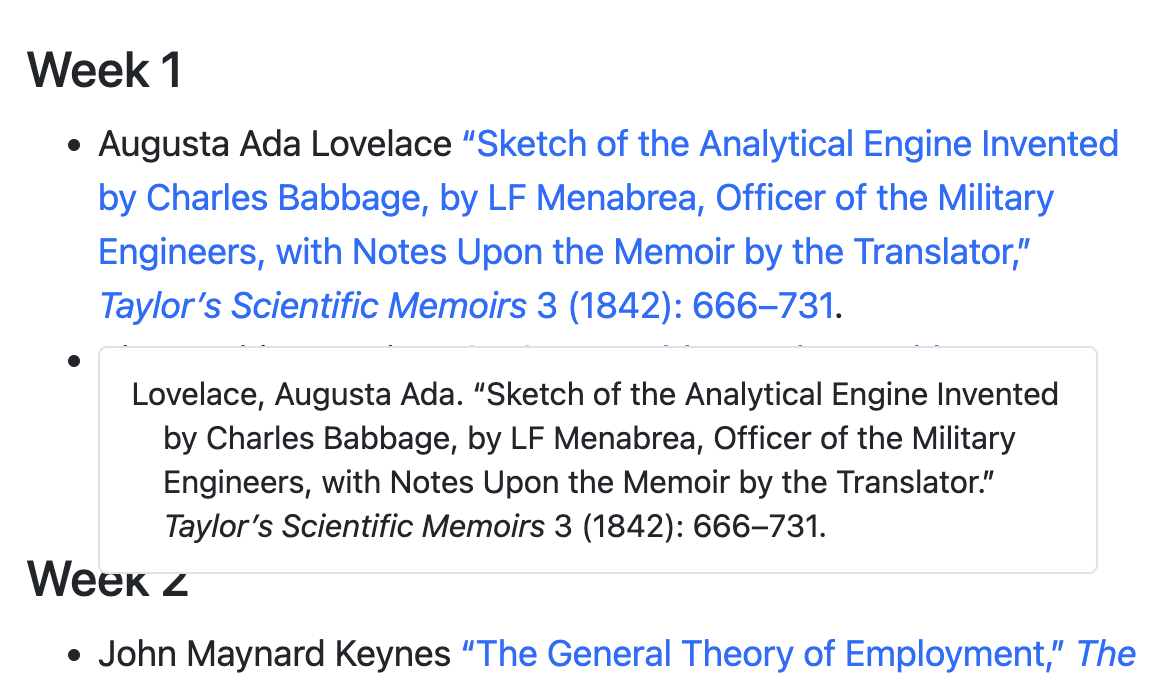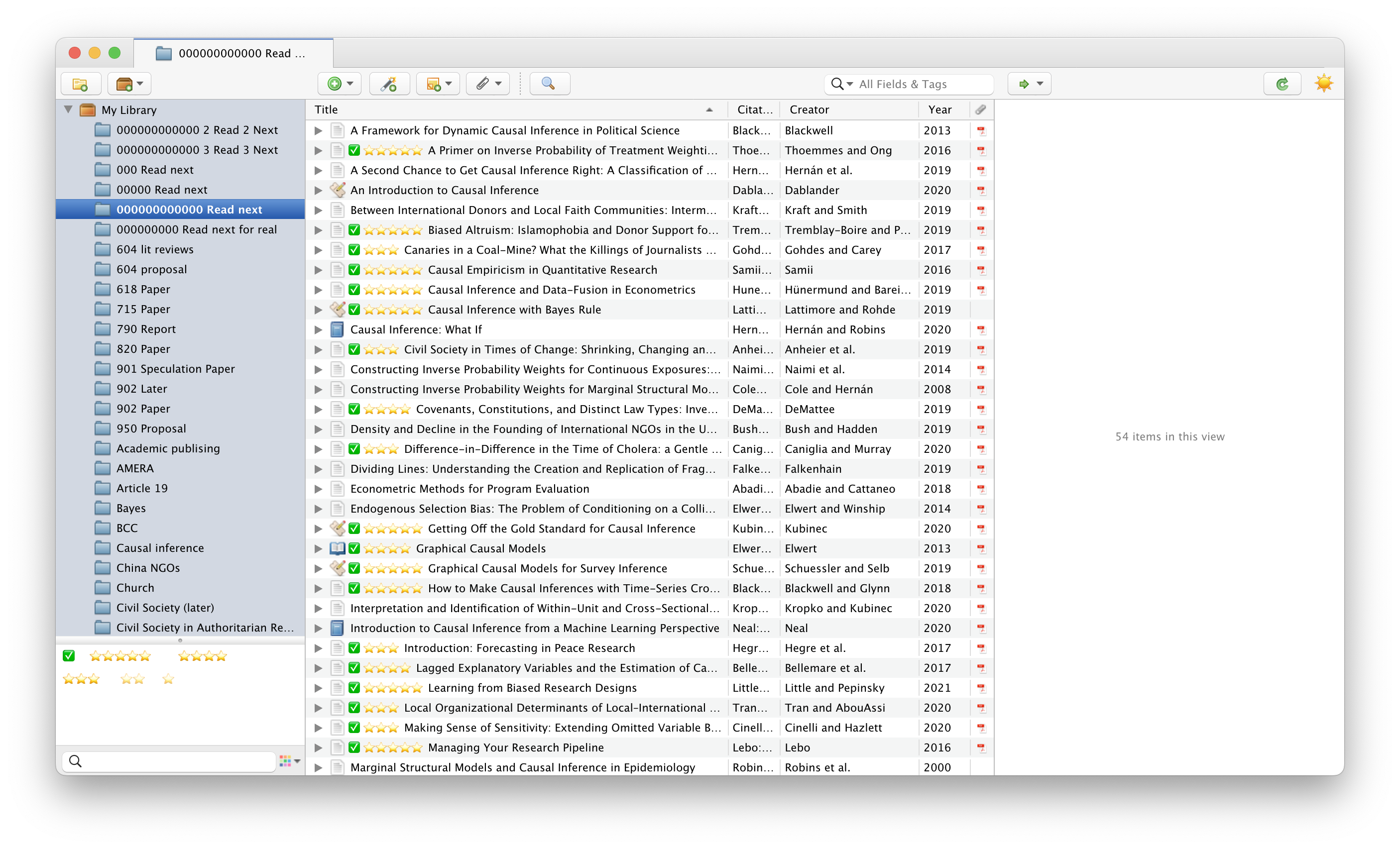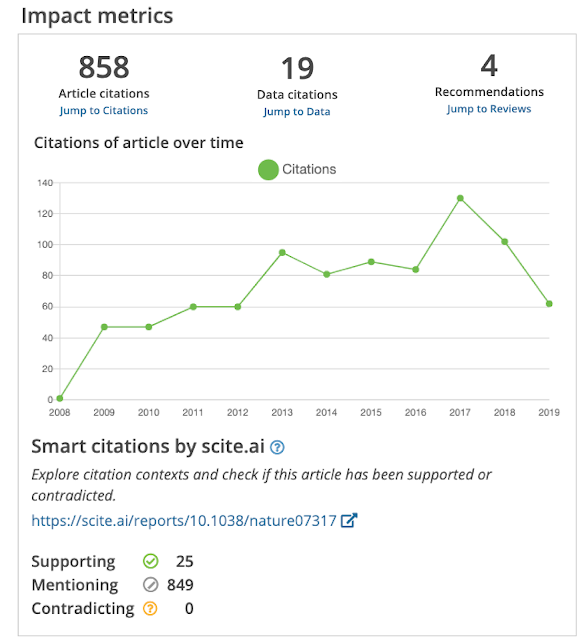
tl;dr If you want to skip the explanation and justification for why you might want separate bibliographies, you can skip down to the example section, or just go see some example files at GitHub. Why use separate bibliographies? In academic articles, it’s common to have a supplemental appendix with extra tables, figures, robustness checks, additional math, proofs, and other details.




